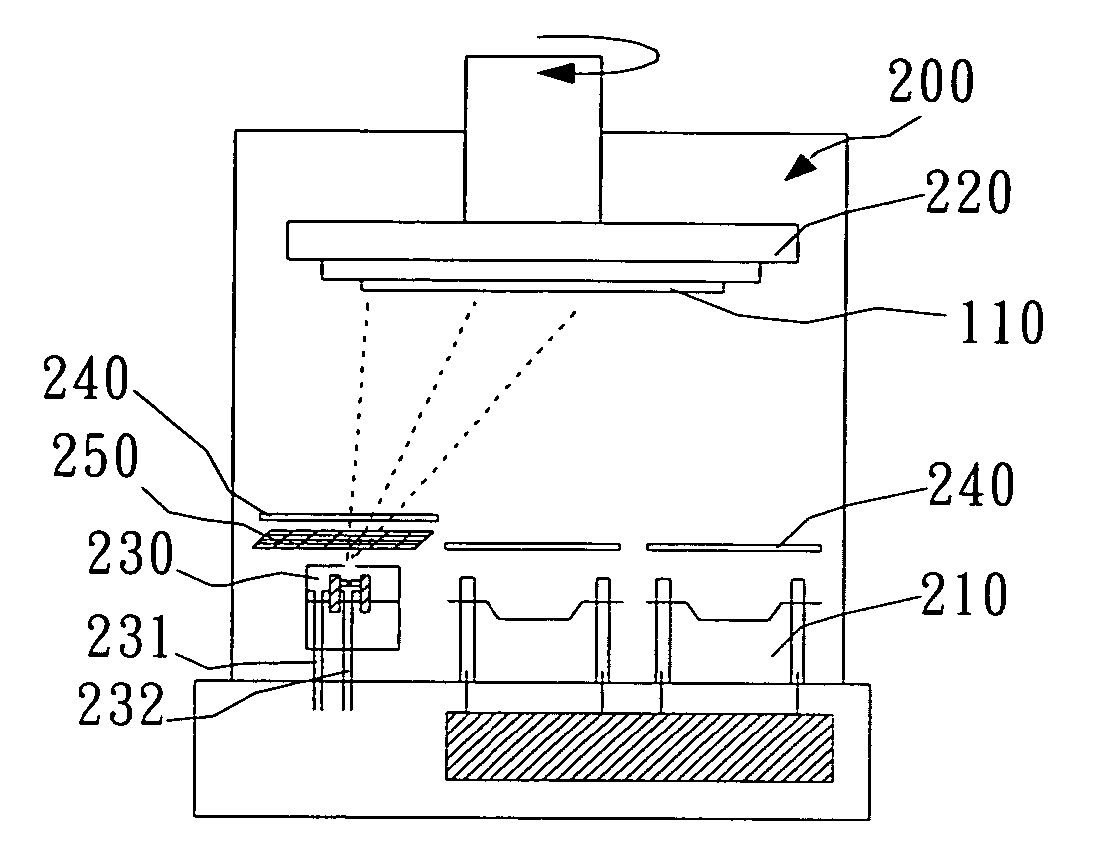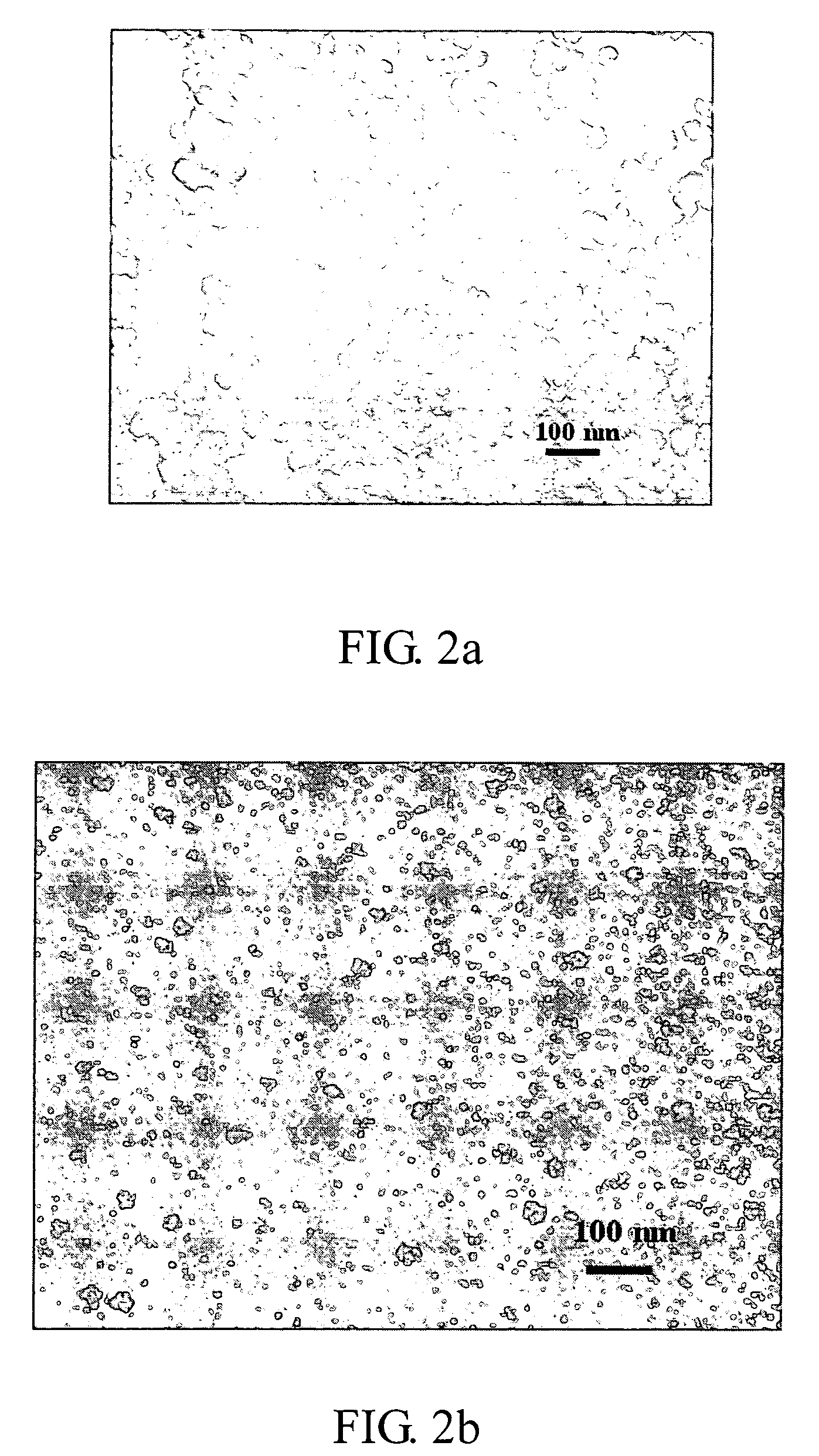Method for manufacturing a quantum-dot element
a manufacturing method and quantum-dot technology, applied in the direction of manufacturing tools, superimposed coating process, chemical coating, etc., can solve the problems of nano-particulate process not being carried out in a continuous process, deterioration of quantum-dot element performance, and inability to manufacture photoelectric elements with nano-particulates. achieve the effect of avoiding quality loss due to transferring between different apparatuses and improving light, electricity and magnetism performan
- Summary
- Abstract
- Description
- Claims
- Application Information
AI Technical Summary
Benefits of technology
Problems solved by technology
Method used
Image
Examples
embodiment 1
Preparation of the Sample Solution Containing CdSe / ZnS Quantum Dot with a Diameter of 3 nm
[0027] The sample solution is introduced by a piezoelectric atomizer to form toluene droplets with an average diameter of 1000 nm. If the influence to the diameter of the droplet caused by the CdSe / ZnS quantum dot is neglected and if each droplet is predetermined to have one quantum-dot particle, then the volume concentration of the sample solution can be calculated as the following equation (3):
(3 nm)3 / {(1000 nm)3+(3 nm)3}=9.00×10−9 (3)
[0028] If each droplet is predetermined to have three quantum-dot particles, then the desired concentration will be three times the concentration obtained from equation (3). Similarly, if each pair of droplets has only one quantum-dot particle, then the desired concentration will be half the concentration obtained from equation (3).
embodiment 2
Preparation of the Sample Solution Containing ZnO Particle with a Diameter of 1 μm
[0029] The sample solution is introduced by a conventional atomizer to form water droplets with an average diameter of 15 μm. If the influence to the diameter of the droplet caused by the ZnO particle is neglected and if each droplet is predetermined to have one particle, then the volume concentration of the sample solution can be calculated as the following equation (4):
(1 μm)3 / {(15 μm)3+(1 μm)3}=2.96×10−4 (4)
[0030] The volume concentration calculated from equation (4) equals to a weight concentration of 1.62×10−3.
[0031] If each droplet is predetermined to have five particles, then the desired concentration will be five times the concentration obtained from equation (4). Similarly, if each pair of droplets contains only one particle, then the desired concentration will be half the concentration obtained from equation (4).
embodiment 3
Preparation of the Sample Solution Containing Silica Nano-Particle with a Diameter of 20 nm
[0032] The sample solution is introduced by a piezoelectric atomizer to form water droplets with an average diameter of 100 nm. If the influence to the diameter of the droplet caused by the silica particle is neglected and if each droplet is predetermined to have one particle, then the volume concentration of the sample solution can be calculated as the following equation (5):
(20 nm)3 / {(100 nm)3+(20 nm)3}=4.63×10−3=0.463V % (5)
[0033] If each droplet is predetermined to have fifteen particles, then the desired concentration will be fifteen times the concentration obtained from equation (5). Similarly, if each pair of droplets contains only one particle, then the desired concentration will be half the concentration obtained from equation (5).
PUM
| Property | Measurement | Unit |
|---|---|---|
| diameter | aaaaa | aaaaa |
| particle sizes | aaaaa | aaaaa |
| diameter | aaaaa | aaaaa |
Abstract
Description
Claims
Application Information
 Login to View More
Login to View More - R&D
- Intellectual Property
- Life Sciences
- Materials
- Tech Scout
- Unparalleled Data Quality
- Higher Quality Content
- 60% Fewer Hallucinations
Browse by: Latest US Patents, China's latest patents, Technical Efficacy Thesaurus, Application Domain, Technology Topic, Popular Technical Reports.
© 2025 PatSnap. All rights reserved.Legal|Privacy policy|Modern Slavery Act Transparency Statement|Sitemap|About US| Contact US: help@patsnap.com



